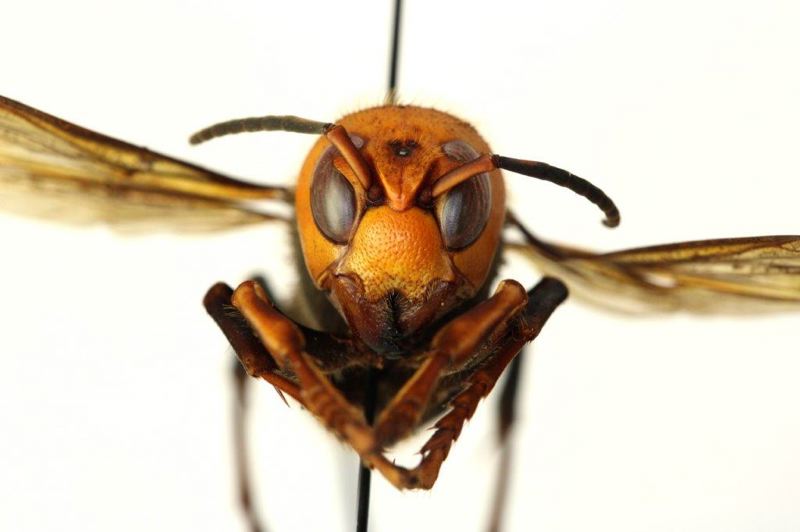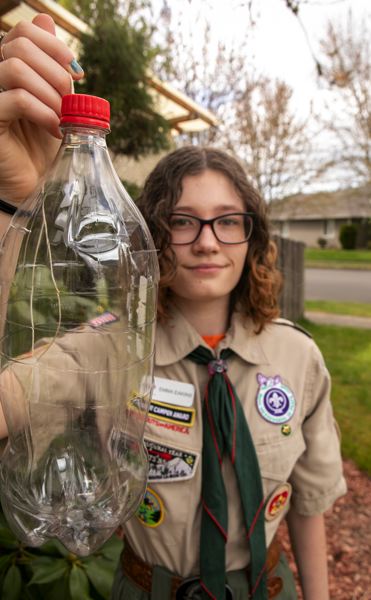PORTLAND, Ore. (PORTLAND TRIBUNE) — Emma Eakins loves insects.
But there’s one insect Eakins hopes to never see in Oregon — the Asian giant hornet, dubbed the “murder hornet” by researchers for its aggressive behavior and powerful sting.
Eakins is a Glencoe High School senior who recently started a project in partnership with the Oregon Department of Agriculture to help people build Asian giant hornet lures and traps.

“Asian giant hornets are not currently in Oregon,” Eakins said, adding that if the invasive species does make it here, they will need to be eradicated.
That’s because they can cause devastation to honeybees, which are crucial for crop pollination and already face numerous environmental threats.
Asian giant hornets are native to East Asia, but they were first discovered in North America near Vancouver Island, Canada in 2019. More recently, they were found in an area of northwest Washington state.
Growing as large as 2 inches long, Asian giant hornets can use their mandibles to decapitate honeybees, taking the honeybees’ bodies to feed their young and wiping out colonies in a matter of hours. They also have stingers that can puncture typical beekeepers’ suits, delivering an excruciatingly painful venom that can be deadly in large doses.
Since their discovery in the United States, state agriculture departments in the northwest have been preparing for their potential arrival.
Thinking of possible projects that she could use as part of becoming an Eagle Scout, Eakins reached out to the ODA and asked if there were any programs she could help with. When she becomes an Eagle Scout, she will join her father and grandfather in the highest scouting rank.

ODA officials told her she could help teach and recruit people to build Asian giant hornet traps and lures, Eakins said.
She started collecting 2-liter bottles to use as the traps and sent an email out to her Scout troop asking for more bottle donations, while she waited for other supplies from the ODA.
Eakins then created a signup sheet for her troop and made instructional videos for volunteers to follow for when they build the traps and lures at their homes.
The traps are 2-liter bottles with holes cut in the top. “You make the holes big enough so that the hornets can get in, but they’re not smart enough to get out,” Eakins said with a laugh.
Inside the bottle is another smaller bottle filled with cotton wicks that ODA officials will soak in an acidic solution to attract Asian giant hornets once Eakins delivers the traps to the ODA, she said.
ODA will place them in strategic places near the Washington state line later this spring, when Asian giant hornets emerge from hibernation and honeybees become more active and vulnerable to being attacked, Eakins said.
As the second part of her project, Eakins has presented to younger Scout troops about invasive species, using Asian giant hornets as an entertaining example.
The project has gotten recognition from a national organization. Eakins was one of 10 students who were recently awarded the Foundation Earth Day Scholarship by the National Society of High School Scholars Foundation. The scholarship recognizes students who are passionate about the environment and who are raising awareness or working to help conservation efforts.
Eakins said she hopes her project will help keep farmers and the honeybees they depend on safe.
With hopes of becoming an entomologist, Eakins will attend the University of Idaho next year.
“I love insects,” she said. “There are just so many of them, and they’re all so vastly different and they’re so small but they have such a big impact on our world. There are so many that we have still probably not found.”

